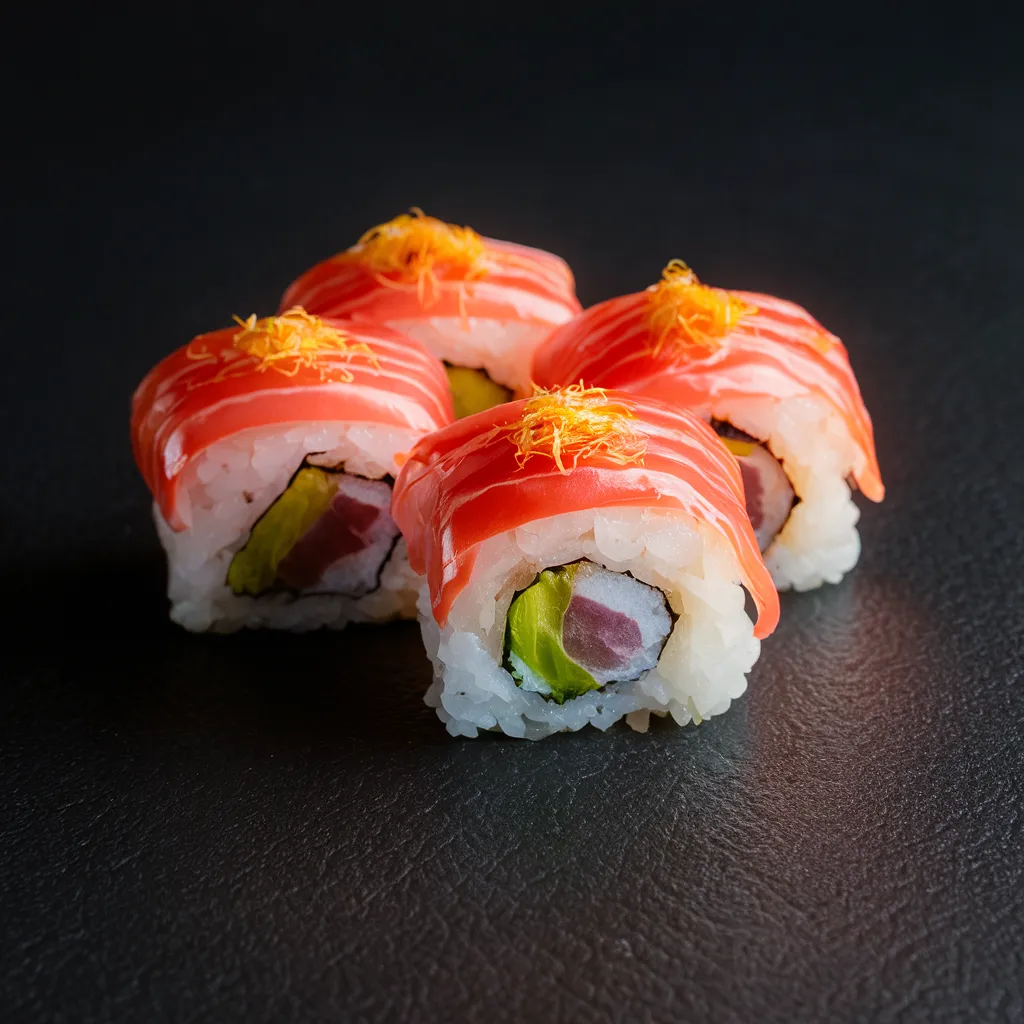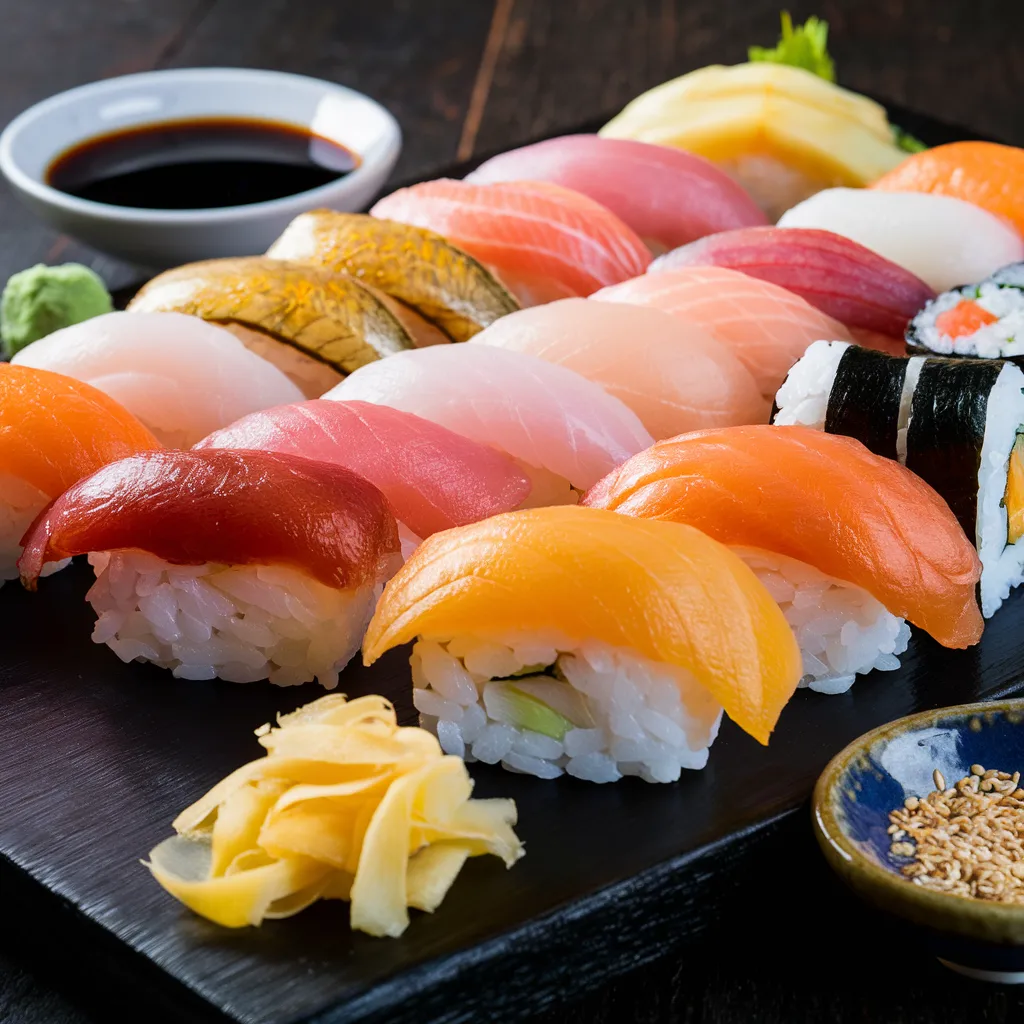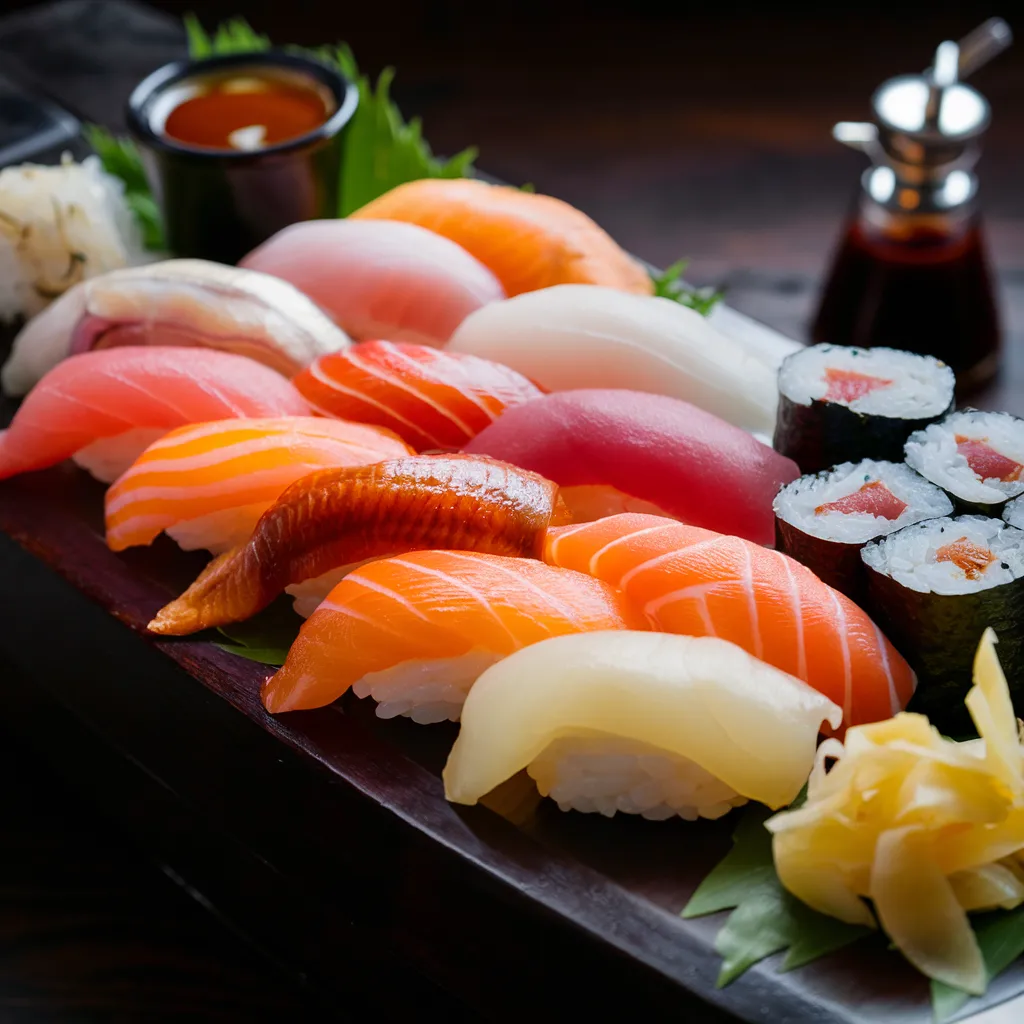Overview:
Ever pondered how sushi evolved from a specialty of Japan to become a staple among foodies worldwide? It’s an intriguing tale that combines artistic expression, culture, and a hint of Hollywood glamour. The history of sushi, from ancient Asia to the sushi bar in your neighborhood, is both fascinating and mouthwatering.
01 – How Sushi Got Started
1.1 Older Origins
The origins of sushi can be found in prehistoric Southeast Asia, where fish was preserved using rice and salt. The sushi we eat now is very different from this early variety, called nare-zushi.
1.2 Change throughout Centuries
Sushi changed as it traveled to Japan. The sushi we know today, particularly nigiri (fresh fish on rice), began to take shape by the Edo period (1603–1868).
02 – Japanese sushi
2.1 Importance in Culture
Sushi is more than simply food in Japan; it’s an artistic creation and a representation of harmony and simplicity. Years are spent honing the art of sushi making, polishing each roll and slice.
2.2 Sushi Varieties
Sushi comes in many forms in Japan: maki rolls, sashimi, and chirashi bowls. The unique perspectives of many regions contribute to the diversity and complexity of sushi.

03 – Early Exposure to Foreign Countries
3.1 Initial Contacts Outside of Japan
Sushi first made its way outside of Japan thanks to Japanese immigrants who carried their culinary customs with them. These interactions were modest at first and had little effect.
3.2 The Importance of Japanese People
Japanese immigrants started operating tiny sushi restaurants around the beginning of the 20th century, especially on the West Coast of the United States. These pioneering businesses laid the groundwork for sushi’s eventual international ascent.
04 – The Introduction of Sushi to the US
4.1 First Impressions in the United States.
When sushi first came to America in the middle of the 20th century, people were both skeptical and curious about it. For Americans, eating raw fish was a very new concept.
4.2 Celebrity Chefs’ Role
Notable chefs such as Nobu Matsuhisa were instrumental in transforming attitudes. Hollywood celebrities became interested in Nobu’s combination of traditional sushi and Peruvian spices, which turned sushi into a popular and sought-after food.
05 – The Roll Phenomenon in California
5.1 Origination and Spread
A revolution in culinary arts occurred when Chef Ichiro Mashita invented the California Roll in the 1960s. This roll introduced avocado and crab to sushi, making it more palatable to American palates than raw fish.
5.2 Effect on the Global Appeal of Sushi
The California Roll demonstrated how versatile sushi can be, inspiring a plethora of inventive versions that catered to a wide range of palates. It had a significant role in making sushi popular all over the world.
06 – Influence of Global Media
6.1 Sushi in TV and Movies
Sushi’s film and television roles piqued people’s curiosity and intrigue. Sushi seemed both exotic and approachable thanks to iconic moments involving it.
6.2 Endorsements by Celebrities
Sushi’s appeal was further increased when celebrities dining at upscale sushi restaurants transformed sushi into a symbol of sophistication and modern living.
07 – Trends in Health and Sushi
7.1 Viewed as a Nutritional Food
The perception of sushi as a high-protein, high-omega-3 dinner option complemented the expanding global health consciousness. It became popular among health enthusiasts because of its low calorie count and fresh ingredients.
7.2 Increased Awareness of Diet
Sushi’s low-carb and high-protein composition made it a perfect fit for the dietary trends such as keto and paleo, securing its position in the health food market.
08 – Innovative Cooking and Fusion Cuisine
8.1 Ingenious Reimaginings of Classic Sushi
Chefs started experimenting with sushi everywhere they went, using regional ingredients and flavors. These inventive meals catered to regional tastes while preserving the essence of sushi.
8.2 Sushi Fusion in World Cuisines
Fusion sushi, which combines regional culinary customs with traditional Japanese methods, has become popular worldwide. These creative pairings highlighted the diversity of sushi and increased its attractiveness.
Visit our Store
09 – The Function of Japanese Restaurants
9.1 The Growth of Restaurants and Sushi Bars
Sushi’s success has been largely attributed to the proliferation of sushi bars and restaurants across the globe. Sushi is now commonly available in both casual dining locations and upscale restaurants.
9.2 Fine Dining Establishments’ Impact
Sushi gained prominence when upscale dining establishments started serving it on their menus. Sushi restaurants with Michelin stars became the new norm, drawing food critics and enthusiasts.
10 – The Adaptability of Sushi
10.1 Tailoring for Regional Tastes
The secret to sushi’s success on a worldwide scale has been its adaptability. Chefs utilize regional ingredients and flavors to customize sushi to suit a wide range of palates.
10.2 Sushi that’s vegan and vegetarian
Creative sushi recipes that satisfy the growing popularity of vegetarian and vegan diets have appeared. Sushi keeps changing, from avocado rolls to plant-based sashimi.
11 – Developments in Technology
11.1 Progress in Food Preservation and Logistics
Thanks to developments in food preservation and transportation technologies, fresh sushi is now available even outside of Japan’s shores. Today, premium ingredients are available everywhere, preserving the essence of sushi.
11.2 Social Media’s Effect
Sushi’s appeal has increased thanks to social media, where mouthwatering sushi dishes have received millions of likes and shares. Sushi has become a popular worldwide dish as a result of its increased digital exposure and exposure to new audiences.
12 – Economic Elements
12.1 Expense and Availability
Over time, sushi has became more widely available and reasonably priced. Sushi is becoming a popular alternative for many people, even if there are still fine sushi restaurants and inexpensive options available at supermarkets and fast-food businesses.
12.2 Worldwide Supply Networks
Sushi ingredients are widely accessible due to effective global supply chains. Because of its accessibility, sushi has continued to be popular and consistent around the world.
13 – Tourism and Cultural Exchange
13.1 How Tourism Helped Popularize Sushi
Sushi’s globalization has been greatly aided by tourism. Travelers who visit Japan frequently fall in love with sushi and return home seeking out similar experiences, which increases demand and appreciation for real sushi.
13.2 Programs for Cultural Exchange
International cooperation and cultural exchange initiatives have helped people appreciate and comprehend sushi on a deeper level. These programs promote cross-cultural interaction while aiding in the preservation of traditional sushi-making methods.
In summary
Sushi’s transformation from a local specialty to a world-renowned culinary dish is evidence of its adaptability, diversity, and allure. Sushi’s popularity has spread across the globe due to a combination of media influence, culinary advancements, and cross-cultural interactions. Sushi continues to entice palates and inspire cooks everywhere, whether it’s served at a fine dining establishment or your neighborhood grocery.
FAQs
01 – Where did sushi come from?
In Southeast Asia, sushi was first created as a way to preserve fish using rice and salt. It developed into the contemporary sushi that we know today in Japan.
02 – What impact did the California Roll have on the acceptance of sushi?
The California Roll contributed to the rise in popularity of sushi both domestically and internationally by making sushi more approachable by utilizing common ingredients like avocado and crab.
03 – Is sushi regarded as a nutritious dish?
Sushi is a popular option for those who are health-conscious because of its high protein content, low calorie count, and fresh ingredients. As a result, it is frequently seen as nutritious.
04 – How has sushi been incorporated into many cultures?
Fusion sushi, which combines traditional methods with regional culinary customs, is the result of sushi’s adaptation through the incorporation of local flavors and ingredients.
05 – Which sushi varieties are popular around the world?
Popular varieties that highlight sushi’s adaptability and appeal to a wide range of palates include nigiri, maki rolls, sashimi, and distinctive regional creations like the California Roll.






Leave a Reply